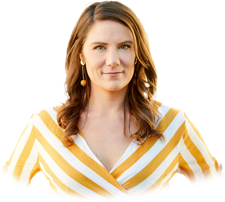Most people have heard of the chemical BPA (Bisphenol A) by now. For those of you who are new to the term, here’s a quick update.
BPA is a chemical used in the manufacture of plastics and other products. It can be found in water bottles, babies bottles, plastic kitchen items, toys and pretty much anything else made from plastic. You’ll find BPA in plastics marked with a 3, 6 or 7, but it can be found in lower amounts in some other of the numbers too.
The cans used in tinned food are lined with a plastic containing BPA. BPA is also found in high levels in receipts that you get when out shopping. The food chain is another source of BPA, since it can bio-accumulate.
BPA has been shown in studies to disrupt hormones, interfere with fertility and even contribute to the growth of certain cancers. BPA affects oestrogen receptors in the body.
The dangers of BPA are well documented, and several international countries (not including Australia and the US) have banned its use in baby and children’s products. As public awareness grows we begin to see ‘BPA free’ items – such as babies bottles, children’s toys and plastic cutlery.
BPA is just one of many forms of Bisphenol chemicals. To make plastic without BPA, other chemicals must be substituted. Most commonly used in BPA products – BPS (Bisphenol S) – is a chemical similar in makeup but perhaps even worse in its detrimental health effects. Unlike BPA, BPS has not been widely studied yet but already has shown in some studies to be over 100 times more potent than BPA.
It took years for the truth about BPA to come to light, and even longer for companies to act on it. The only solution to completely avoid bisphenol compounds is to avoid plastic altogether. This is no easy task. Plastic use has become a regular occurrence in our daily lives – right from when we are babies.
My advice to you is to do everything that you possibly can to reduce plastic use in your day to day life. There are many products that are made from safe materials such as glass, stainless steel and natural fabrics that can replace your plastic goods. Here are some suggestions:
Food storage containers
You can now buy glass food storage containers which have plastic lids. Since the food is stored in the glass part you should not get many chemicals coming in to your food. I have also seen stainless steel lunch boxes and food containers, which are a break-free option.
Water bottles
Apart from the unnecessary expense and impact on the environment, buying bottled water means you’re getting a hefty dose of bisphenlos too. Who knows how long that water has been sitting in the bottle before you bought it? Using your own re-usable glass and stainless steel bottles and filling them with filtered water is the best thing to do. Do not use plastic sports bottles or re-use water bottles. Never put a hot liquid in a plastic bottle or cup!
Receipts
Try not to touch receipts too much and throw them in the regular rubbish (don’t recycle). Never give them to your children to play with!
Baby bottles
Glass or stainless steel bottles are always best. You can get silicon sleeves to put over glass bottles that prevent breakage and make them easier to hold on to. If you find glass too heavy or are afraid of breakage then get stainless steel baby bottles. You can even buy thermos style ones that keep the liquid warm or cold. Although tempting to just use plastic (especially when tired from lack of sleep!) this is one of the most important ones to consider, as warming up milk in plastic leaches even more bisphenols into the liquid.
Baby and children’s spoons, bowls and cups
Your baby will need something that is gentle to chew on while they are learning to eat. Wooden spoons (baby sized of course) are a great alternative to plastic and they won’t break when thrown. You can also get wooden bowls and cups, or stainless steel bowls, sippy cups and plates. Once you feel your child is old enough, introduce ceramic or stoneware crockery like the rest of the family is using.
Baby toys
This one is very difficult to avoid completely as babies love those bright plastic toys! Teething toys are the most important, as these are the ones that will be getting the most mouth time. You can buy natural rubber teething rings and the favourite ‘Sophie giraffe’ is made from natural rubber and food safe dyes that are OK for baby. Wooden teethers are also fantastic – choose one without paint or varnish. Toys made from natural cloth fibers (like cotton) are also great.
I have to admit my home is not 100% plastic free (yet). I do however try to make sure that I use alternatives as much as possible. I am aware perhaps more than most of the sources of BPA in our environment and I endeavor to make myself and my child’s bodies consume as little as possible.
Do you have any other suggestions to help reduce plastic use? I’d love to hear from you!


